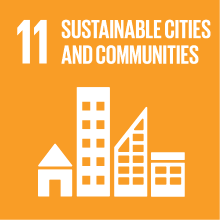ETRUSCOLOGY AND ITALIC ARCHAEOLOGY
- Academic year
- 2023/2024 Syllabus of previous years
- Official course title
- ETRUSCOLOGIA E ARCHEOLOGIA ITALICA
- Course code
- FM0078 (AF:471719 AR:258560)
- Teaching language
- Italian
- Modality
- On campus classes
- ECTS credits
- 6
- Degree level
- Master's Degree Programme (DM270)
- Academic Discipline
- L-ANT/06
- Period
- 1st Semester
- Where
- VENEZIA
- Moodle
- Go to Moodle page
Contribution of the course to the overall degree programme goals
It will be analyzed relationships with etrusco-italic, Mediterranean and European cultures; we pay attention to the chronological items and to material culture.
Our main focus is to improove ability to make chronological references for archaeological evidence of etruscan art and civilisation.
Single item will be selected and specifically oriented, in flipped classroom mode too.
Expected learning outcomes
- To know basic archaeological and technical terminology
- To Know development of settlements and cities in Venetic area
- To Know main theoretical models to analize urban societies
- To know main features of local material culture
2. Ability to apply knowledge and understanding
- To be able to employ archaeological and technical terminology
- To be able to apply theoretical models for the development of Venetic culture and landscape
- To be able to analyze to analyze settlements and cities
- To be able to analyze examples of material culture and artistic finds
3. Judgment skills
- To be able to judge and argue hypothesis about venetic contexts
4. Communication skills
- To be able to tell new finds or results of the research with a plain and technical terminology
- To be able to compare themselves with colleagues and tutor, even on.line
5. Learning ability
- To be able to take notes and to share them with colleagues, even on line
- To be able to consult bibliographic references even with a critical point of view
Pre-requirements
Contents
Referral texts
M. TORELLI, L'arte degli Etruschi, Milano 1988.
L. ZAGHETTO 2002, Dalla “Parola” alle “Frasi”: unità semplici e unità strutturate nel linguaggio delle immagini. Il caso dell’arte delle situle, in Colpo I. et Al. (a cura di), Iconografia 2001. Studi sull’immagine, Atti del Convegno (Padova 2001), Roma, pp. 31-43.
G. SASSATELLI 2013, L’arte delle situle, in M. GAMBA et Alii (a cura di) 2013, Venetkens. Viaggio nella terra dei Veneti antichi, catalogo della mostra, Venezia, pp. 98-105.
L. ZAGHETTO 2018, Il metodo narrativo nell’Arte delle situle, in Arimnestos 1, pp. 239-250.
Etruscans:
L. CERCHIAI 1980, La "machaira" di Achille, alcune osservazioni a proposito della 'Tomba dei Tori' , in AION II, p. 25 ss.
M. MENICHETTI 1994, Archeologia del potere, Longanesi, Milano.
M. TORELLI 1997, Il rango, il rito e l’immagine: alle origini della rappresentazione storica romana, Milano.
L. CERCHIAI, B. D’AGOSTINO 1999, Il mare, la morte, l’amore, Donzelli.
S. VERGER 2011, Duel privé, duel public. Le trône de la tombe 89/1972 Lippi de Verucchio, aux origines de la représentation des rituels politiques étrusques, in G. CANTINO WATAGHIN (a cura di), Finem dare: il confine tra sacro, profano e immaginario: a margine della stele bilingue del Museo Leone di Vercelli, Atti del Convegno (Vercelli 2008), pp. 171-2015.
Art of situlae:
P. CÀSSOLA GUIDA 1997, Spunti sull’interpretazione dell’“arte delle situle”: la situla della tomba Benvenuti 126, Ostraka VI, 2, pp. 201-213.
P. TURK 2005, Images of life and myth, catalogo della mostra, Ljubljana.
E. DI FILIPPO BALESTRAZZI 2004, Cerimonialità socio-politica e formazione della città nel Veneto preromano: Padova, Este ed altri luoghi. Continuità e discontinuità tra protostoria e romanizzazione, in AUGUSTA-BOULAROT S., LAFON X. (edd.), Des Ibères aux Vénètes, Rome 2004, pp. 379-407.
A. ZACCARIA RUGGIU 2004, Il banchetto omerico e gli stili dell’aristocrazia. L’esempio delle situle, in Studi di Archeologia in onore di Gustavo Traversari, Roma 2004, pp. 963-993.
E. DI FILIPPO BALESTRAZZI 2011, Un tema “omerico” nella situla di Welzelach?, in Tra Protostoria e Storia. Studi in onore di Loredana Capuis, Roma, pp. 223-244.
B. TERŽAN 2011, Horses and cauldrons: some remarks on horse and chariot races in situla art, in NAB 19, pp. 303-325.
M. CUPITÒ 2016, La situla Benvenuti 126. Un symbol in action dell’ideologia aristocratica atestina, in J. BONETTO et alii (a cura di), I mille volti del passato. Scritti in onore di Francesca Ghedini, Roma, pp. 105-122.
L. ZAGHETTO 2017, La situla Benvenuti di Este. Il poema figurato degli antichi Veneti, Bologna.
MARCHESINI S.- ZAGHETTO L. 2019, The situla in Providence. A comprehensive analysis of inscription and decorative program, in S. HYE-U. TÖCHTERLE (Hrsgg.), UPIKU:TAUCHE. Festschrift für Gerhard Tomedi zum 65. Geburtstag, Bonn, pp. 329-341.
GAMBACURTA G.-BUSON S. 2021, Per una rilettura del vaso Alfonsi: dall’immagine al territorio, in M. GAMBA et Alii (a cura di), Metalli, creta, una piuma d’uccello... Studi di Archeologia per Angela Ruta Serafini, Quingentole (MN), pp. 249-262.
ZAGHETTO L.-BUSON S. 2021, La situla Arnoaldi di Bologna. Lettura iconografica e tecnologica, in M. GAMBA et Alii (a cura di), Metalli, creta, una piuma d’uccello...,pp. 201-217.
ZAGHETTO L. 2022, La situla della Certosa di Bologna. Alle origini della ritualità nell’Italia protostorica, Bologna.
Assessment methods
Type of exam
Teaching methods
Lectures and exercises
On.line papers for specific topics.
Flipped classroom
2030 Agenda for Sustainable Development Goals
This subject deals with topics related to the macro-area "Cities, infrastructure and social capital" and contributes to the achievement of one or more goals of U. N. Agenda for Sustainable Development


